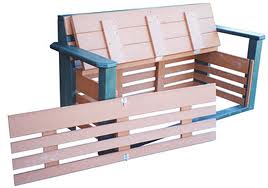New Years resolutions have taken all forms this week. From the extra people in my aerobics class yesterday, to facebook posts, to the many blog writers who have weighed in on their goals for 2013. While, I do have several goals both professional and personal, I wanted to put a spin on my goals and answer a question I get asked atleast a dozen times each December through February. “What do you do all winter?”.
I always love this very valid question because in all honesty the job that keeps us running crazy all summer resembles only a glimmer of what it is during Spring, but shifts into something else equally important. Every moment of thought of how to improve the job, streamline processes, or gain new skill gets shoved into a compartment in my brain I like to call “winter projects”. Here are a few of my goals for the winter that I can only hope will be accomplished before St. Patrick’s Day.
1. Techie Talk
We all know that technology has its place for making our lives easier (and more complicated) and I have planned to use my newly purchased ipad to its full advantage. My goal is to make a killer database of pictures that are categorized more effectively by types of materials, projects, plants, and ideas. Instead of having to flip through a book of a few pictures of ideas in no clear order, I can take a client right to file labeled for example “outdoor kitchens” and cater the pictures that are shown directly to their landscape needs and wants. Also, the ipad will be able to take pictures and video of projects that will eliminate my need to download photos onto a computer. To go a step further, I am currently designing a small video to help explain our design process to help potential clients understand what to expect.
2. Get over the Learning Curve of Sketchup
I recently downloaded a copy of the popular design program formally by Google and am working on trying to learn how to use it for 3-D imaging. If you are a facebook fan of EverGreen Landscape check for a contest coming later this month for your chance to win a Sketchup Design of your landscape, compliments of my much needed practice.
3. Update Pricing
This is a goal we accomplish together as an office every year to make sure that we have all our prices correct in the system. This year will be especially labor intensive as we will no longer have software support which means we will be typing every plant price in by hand. Yikes!
4. Marketing Efforts on Steroids
This is the time for planning what kinds of marketing we will be doing throughout the season. Once we get rolling in the Spring, there is hardly time to implement it, so planning ahead is key. Last year, we launched a Facebook campaign complete with ideas for contests, and giveaways. This season, our main focus is changing up our website.
5. The Show Goes On and On
From our yearly tradeshow Midam, continuing education seminars to the homeshows and tradeshows that we participate in around the area, we have a busy winter spent in a lot of conference centers. I especially enjoy the classes we take and getting out and seeing collegues that are hard to see during the season when I feel like I spend more time with the company minivan than actual people.
Hopefully, if I’ve written these down for anyone to see that means I am actually going to accomplish all of this during the winter, as there are only two more months left. This is the reason why I love to answer “What do you do all winter?” as it is more of a question of “What can you get done this winter?” I plan to take full advantage.





































